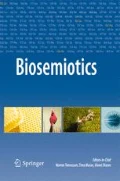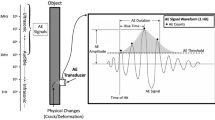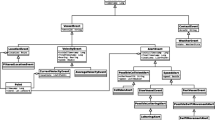Abstract
In programs of acoustic survey, the amount of data collected and the lack of automatic routines for their classification and interpretation can represent a serious obstacle to achieving quick results. To overcome these obstacles, we are proposing an ecosemiotic model of data mining, ecoacoustic event detection and identification (EEDI), that uses a combination of the acoustic complexity indices (ACItf, ACIft, and ACIfte) and automatically extracts the ecoacoustic events of interest from the sound files. These events may be indicators of environmental functioning at the scale of individual vocal species (e.g., behavior, phenology, and dynamics), the acoustic community (e.g., dawn and dusk chorus), the sound marks (e.g., the flag species of a community), or the soundscape (e.g., sonotope types). The EEDI model is represented by three procedural steps: 1) selecting acoustic data according to environmental variables, 2) detecting the events by creating an ecoacoustic event space (EES) produced by plotting ACIft and its evenness (ACIfte), 3) identifying events according to the level of correlation between the acoustic signature (ACItf) of the detected events and an ad hoc library of previously identified events. The EEDI procedure can be extensively used in basic and applied research. In particular, EEDI may be used in long-term monitoring programs to assess the effect of climate change on individual vocal species behavior (fishes, frogs, birds, mammals, and arthropods), population, and acoustic community dynamics. The EEDI model can be also used to investigate acoustic human intrusion in natural systems and the effect in urban areas.






Similar content being viewed by others
References
Alatalo, R. V. (1981). Problems in the measurement of evenness in ecology. Oikos, 37, 199–204.
Bardeli, R., Wolff, D., Kurth, F., Koch, M., & Frommolt, K. H. (2010). Detecting bird sounds in a complex acoustic environment and application to bioacoustic monitoring. Pattern Recognition Letters, 31, 1524–1534.
Bobryk, W. C., Rega, C. C., Bardhan, S., Farina, A., He, H. S., & Jose, S. (2015). Utility of soundscape assessment for understanding conservation benefits of temperate agroforestry systems. Agroforestry Systems. doi:10.1007/s10457-015-9879-6.
Bormpoudakis, D., Sueur, J., & Pantis, J. (2013). Spatial heterogeneity of ambient sound at the habitat type level: ecological implications and applications. Landscape Ecology, 28, 495–506.
Brandes, T. S. (2008). Automated sound recording and analysis techniques for bird surveys and conservation. Bird Conservation International, 18, S163–S173.
Bulla, L. (1994). An index of evenness and its associated diversity measure. Oikos, 70, 167–171.
Depraetere, M., Pavoine, S., Jiguet, F., Gasc, A., Duvail, S., & Sueur, J. (2012). Monitoring animal diversity using acoustic indices: implementation in a temperate woodland. Ecological Indicators, 13, 46–54.
Duarte, M. H. L., Sousa-Lima, R. S., Young, R. J., Farina, A., Vasconcelos, M., Rodrigues, M., & Pieretti, N. (2015). The impact of noise from open-cast mining on Atlantic forest biophony. Biological Conservation, 191, 623–631.
Farina, A. (2008). Ecology, cognition and landscape. Linking natural and social systems. Dordrecht, NL: Springer.
Farina, A. (2010). Ecology, cognition and landscape. Dordrecht, NL: Springer.
Farina, A. (2014). Soundscape ecology: principles, patterns, methods and applications. NL: Springer Dordrecht.
Farina, A. (2015). Animals in a noisy world. In R. Tønnessen & A. Oma (Eds.), Thinking about animals in the age of anthropocene (pp. 37–52). Rowan & Littlefield: Lexington Books, Lenham, MD, US.
Farina, A., & Belgrano, A. (2004). The eco-field: a new paradigm for landscape ecology. Ecological Research, 19(1), 107–110.
Farina, A., & Belgrano, A. (2006). The eco-field hypothesis: toward a cognitive landscape. Landscape Ecology, 21(1), 5–17.
Farina, A., & James, P. (2016). Acoustic community structure and dynamics: a fundamental component of acoustics. Biosystems. doi:10.1016/j.biosystems.2016.05.011.
Farina, A., & Morri, D. (2008). Source-sink e eco-field: ipotesi ed evidenze sperimentali. Atti del X congresso nazionale della SIEP-IALE. Ecologia e governance del paesaggio: esperienze e prospettive. Bari, 365–372.
Farina, A., & Salutari, P. (2016). Applying the ecoacoustic event detection and identification (EEDI) model to the analysis of acoustic complexity. Journal of Mediterranean Ecology, 14, 13–42.
Farina, A., Pieretti, N., & Piccioli, L. (2011). The soundscape methodology for long-term bird monitoring: a Mediterranean Europe case-study. Ecological Informatics, 6, 354–363.
Farina, A., Lattanzi, E., Piccioli, L., Pieretti, N. (2012). The SoundscapeMeter. http://www.disbef.uniurb.it/biomia/soundscapemeter.
Farina, A., Pieretti, N., & Morganti, N. (2013). Acoustic patterns of an invasive species: the red-billed Leiothrix (Leiothrix lutea Scopoli 1786) in a Mediterranean shrubland. Bioacoustics, 22(3), 175–194.
Farina, A., James, P., Bobryk, C., Pieretti, N., Lattanzi, E., & McWilliam, J. (2014). Low cost (audio) recording (LCR) for advancing soundscape ecology towards the conservation of sonic complexity and biodiversity in natural and urban landscapes. Urban Ecosystems, 17, 923–944.
Fuller, S., Axel, A. C., Tucker, D., & Gage, S. H. (2015). Connecting soundscape to landscape: which acoustic index best describe landscape configuration? Ecological Indicators, 58, 207–215.
Gage, S. H., & Axel, A. C. (2014). Visualization of temporal change in soundscape power of a Michigan lake habitat over a 4-year period. Ecological Informatics, 21, 100–109.
Gage, S. H., Napoletano, B. M., & Cooper, M. C. (2001). Assessment of ecosystem biodiversity by acoustic diversity indices. The Journal of the Acoustical Society of America, 109, 2430.
Gasc, A., Sueur, J., Jiguet, F., Devictor, V., Grandcolas, P., Burrow, C., et al. (2013). Assessing biodiversity with sound: do acoustic diversity indices reflect phylogenetic and functional diversities of bird communities? Ecological Indicators, 25, 279–287.
Gillooly, J.F., Ophir, A.G., (2010). The energetic basis of acoustic communication. Proceedings of the Royal Society, B, 277, 1325–1331.
Harris, S., Shears N. T., & Radford, C. A. (2016). Ecoacoustic indices as proxies for biodiversity on temperate reefs. Methods in Ecology and Evolution. doi:10.1111/2041-210X.12527
Heip, C. (1974). A new index measuring evenness. Journal of the Marine Biological Association of the UK, 54, 555–557.
Heittola, T., Mesaros, A., Virtanen, T., Eronen, A. (2011). Sound event detection and context recognition. CHiME 2011 Workshop on Machine Listening in Multisource Environments.
Hill, M. O. (1973). Diversity and evenness: a unifying notation and its consequences. Ecology, 54(2), 427–432.
Hill, M. O. (1997). An evenness statistics based on the abundance-weighted variance of species proportions. Oikos, 79, 413–416.
Hurlbert, S. H. (1978). The measurement of niche overlap and some relatives. Ecology, 59(1), 66–77.
Jancke, L., Kuhnis, J., Rogenmoser, L., Elmer, S. (2015). Time course of EEG oscillations during repeated listening of a well-known aria. Frontiers in Human Neuroscience, 9. doi:10.3389/fnhum.2015.00401.
Joo, W., Gage, S. H., & Kasten, E. P. (2011). Analysis and interpretation of variability in soundscapes along an urban–rural gradient. Landscape and Urban Planning, 103, 259–276.
Kaplan, M. B., Mooney, T. A., Partan, J., & Solow, A. R. (2015). Coral reef species assemblages are associated with ambient soundscape. Marine Ecology Progress Series, 533, 93–107.
Krause, B., & Farina, A. (2016). Using ecoacoustic methods to survey the impacts of climate change on biodiversity. Biological Conservation, 195, 245–253.
Levins, R. (1968). Evolution in changing environments. Some theoretical explorations: Princeton University Press, Princeton, New Jersey.
Lloyd, M., & Ghelardi, R. J. (1964). A table for calculating the “equitability” component of species diversity. Journal of Animal Ecology, 33, 217–225.
Llusia, D., Marquez, R., Beltran, J. F., Benitez, M., & Do Amara, J. (2013). Calling behaviour under climatic change: geographical and seasonal variation of calling temperatures in ectotherms. Global Change Biology, 19, 2655–2674.
Lozano, A., Farina, A., & Márquez, R. (2014). ACI (acoustic complexity index): Nueva herramienta Para el estudio del canto de anuros ACI (acoustic complexity index): a new tool to study anuran calls. Quehacer Científico en Chiapas, 9(2), 2014.
Ma, L., Milner, B., & Smith, D. (2006). Acoustic environment classification. ACM Trans. Speech Language Processing, 3(2), 1–22.
Maran, T., & Kull, K. (2014). Ecosemiotics: main principles and current developments. Geografiska Annaler: Series B, Human Geography, 96, 41–50.
McWilliam, J. N., & Hawkins, A. D. (2013). A comparison of inshore marine soundscapes. Journal of Experimental Marine Biology and Ecology, 446, 166–176.
Mesaros, A., Heittola, T., Eronen, A., Virtanen, T. (2010). Acoustic event detection in real-life recordings. 18th European Signal Processing Conference (EUSIPCO 2010), Aalborg, Denmark, Aug. 2010, pp. 1267–1271.
Molinari, J. (1989). A calibrated index for the measurement of evenness. Oikos, 56, 319–326.
Monacchi, D. (2014). Fragments of extinction. In Leonardo Music Journal, 23. Cambridge, MA: MIT Press.
Morri, D. (2008). Ecosemiotica e paesaggi sonori: nuove teorie e metodologie per l’ecologia. Unpl. PhD thesis, Università degli Studi di Urbino “Carlo Bo”.
O’Neill, R. V., DeAngelis, L., Waide, J. B., & Allen, T. F. H. (1986). A hierarchical concept of ecosystems. Princeton, NJ, US: Princeton University Press.
Orloci, L. (1967). An agglomerative method for classification of plant communities. Journal of Ecology, 55, 193–205.
Peet, R. K. (1974). The measurements of species diversity. Annual Review of Ecology, Evolution, and Systematics, 5, 285–307.
Pieretti, N., & Farina, A. (2013). Application of a recently introduced index for acoustic complexity to an avian soundscape with traffic noise. The Journal of the Acoustical Society of America, 134(1), 891–900.
Pieretti, N., Farina, A., & Morri, D. (2011). A new methodology to infer the singing activity of an avian community: the acoustic complexity index (ACI). Ecological Indicators, 11, 868–873.
Pieretti, N., Duarte, M. H. L., Sousa-Lima, R. S., Rodrigues, M., Young, R. J., & Farina, A. (2015). Determining temporal sampling schemes for passive acoustic studies in different tropical ecosystems. Tropical Conservation Science, 8, 215–234.
Pijanowski, B. C., Villanueva-Rivera, L. J., Dumyahn, S. L., Farin, A., Krause, B. L., Napoletano, B. M., et al. (2011). Soundscape ecology: the science of sound in the landscape. Bioscience, 61, 203–216.
Sjolander, K., & Beskow, J. (2000). WaveSurfer—An open source speech tool. Proceedings of the ICSLP, 2000(4), 464–467.
Staaterman, E., Rice, A. N., Mann, D. A., & Paris, C. B. (2013). Soundscapes from a tropical eastern Pacific reef and a Caribbean Sea reef. Coral Reefs, 32, 553–557.
Sueur, J., & Farina, A. (2015). Acoustics: the ecological investigation and interpretation of environmental sound. Biosemiotics, 8, 493–502. doi:10.1007/s12304-015-9248-x.
Sueur, J., Pavoine, S., Hamerlynck, O., & Duvail, S. (2008a). Rapid acoustic survey for biodiversity appraisal. PLoS ONE, 3, 1–9.
Sueur, J., Aubin, T., & Simonis, C. (2008b). Seewave: a free modular tool for sound analysis and synthesis. Bioacoustics, 18, 213–226.
Sueur, J., Farina, A., Gasc, A., Pieretti, N., & Pavoine, S. (2014). Acoustic indices for biodiversity assessment and landscape investigation. Acta Acustica united with Acustica, 100, 772–781.
Towsey, M., Wimmer, J., Williamson, I., & Roe, P. (2014). The use of acoustic indices to determine avian species richness in audio-recordings of the environment. Ecological Informatics, 21, 110–119.
Tucker, D., Gag, S., Williamson, I., & Fuller, S. (2014). Linking ecological condition and the soundscape in fragmented Australian forests. Landscape Ecology, 29, 745–758.
von Uexküll, J. (1982). The theory of meaning. Semiotica, 42(1), 25–82.
Whittaker, R. H. (1952). A study of the summer foliage insect communities in the great Smoky Mountains. Ecological Monographs, 22, 1–44.
Whittaker, R. H. (1975). Communities and ecosystems (Second ed.). Inc. New York: MacMillan Publishing Co..
Winner, J., Towsey, M., Roe, P., & Williamson, I. (2013). Sampling environmental acoustic recordings to determine bird species richness. Ecological Applications, 23(6), 1419–1428.
Zhuang, X., Zhiu, X., Hasegawa-Johnson, M. A., & Huang, T. S. (2010). Real-world acoustic event detection. Pattern Recognition Letters, 31, 1543–1551.
Author information
Authors and Affiliations
Corresponding author
Electronic supplementary material
ESM 1
(DOCX 50077 kb)
Rights and permissions
About this article
Cite this article
Farina, A., Pieretti, N., Salutari, P. et al. The Application of the Acoustic Complexity Indices (ACI) to Ecoacoustic Event Detection and Identification (EEDI) Modeling. Biosemiotics 9, 227–246 (2016). https://doi.org/10.1007/s12304-016-9266-3
Received:
Accepted:
Published:
Issue Date:
DOI: https://doi.org/10.1007/s12304-016-9266-3




